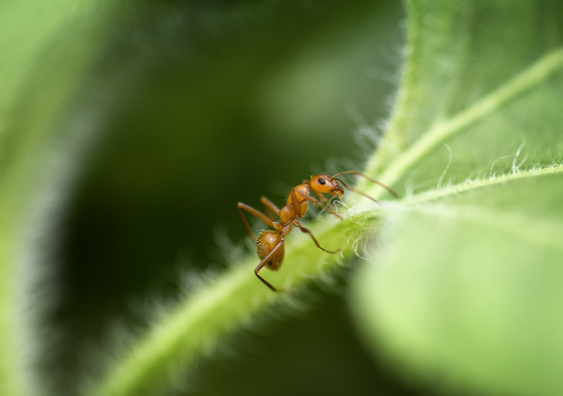Fire ants are on the march. Here's what happens when they sting
Most stings can be safely handled at home. But in rare cases, you can get a serious allergic reaction, which needs urgent medical attention.
Most stings can be safely handled at home. But in rare cases, you can get a serious allergic reaction, which needs urgent medical attention.

Red imported fire ants are a particularly nasty type of ant because they are aggressive, and inflict painful stings that may be life threatening. That’s in addition to being a serious threat to agriculture and biosecurity.
In recent weeks, we heard these ants had spread from Queensland, south into northern New South Wales.
Although their stings are rare in Australia, they can lead to a serious allergic reaction. Here’s what to do if you’ve been stung.
Red imported fire ants (Solenopsis invicta) are native to South America but have been spreading across the world in contaminated soil.
The ants are 2-6 millimetres long and are a dark red-brown colour. They live in nests in the ground.
Here’s what red imported fire ants look like (Biosecurity Queensland).
When a nest is disturbed, hundreds of ants come out and attack. Their jaws lock onto the skin and they arch their body to inject venom through a stinger on their abdomen. Each ant stings an average seven to eight times.
These ants sting millions of people a year in the United States.
Anyone who disturbs their nest is at risk of being stung. Even minor disturbances will cause the ants to surface and attack.
Overseas, people have been stung by ants that have formed rafts during heavy rainfall and flooding.
Fortunately, red imported fire ant stings have been uncommon in Australia, and we hope it stays this way.
Their sting is painful, with a fire-like burning character, and is associated with swelling and redness. Over the following hours or days, sting sites develop blisters or pustules that are itchy and take days to improve.
A person can easily be stung hundreds of times, which can cause a lot of distress.
Many people with a smaller number of stings can be safely managed at home. Usual treatments include:
gently washing the area with soap and water
using cold compresses on red and swollen stings. If you use an ice pack or ice, avoid direct contact with the skin
taking antihistamines, which you can buy from your local pharmacy.
Do not break the blisters that form at sting sites, and see your local doctor if the stings become more red and painful a few days later, to exclude infection.
Uncommonly, red imported fire ant stings can be life threatening. About 2% of people who are stung develop a severe and life-threatening allergic reaction known as anaphylaxis. This has also been reported in Australia.
Many stinging animals in Australia can cause anaphylaxis, including bees, wasps, and other ants such as jack jumper ants.
People allergic to some wasps may also be allergic to venom from the red fire ants.
Symptoms of anaphylaxis after being stung by a fire ant are similar to those after being stung by other animals. Symptoms include:
difficulty talking or breathing
noisy breathing
swelling of the face (including lips, eyes or tongue)
tightness in the throat, with difficulty swallowing
dizziness
collapsing.
There may also be a spreading red rash (hives or welts).
If you have any of these symptoms, seek immediate medical assistance. This may including calling 000.
Rarely, the ant venom can cause other toxic effects, which may be more likely in people who have been stung hundreds of times. So seek medical advice if you have unexplained or unusual symptoms after you’ve been stung.
Avoid exposing yourself to imported red fire ants. Report nests to authorities. Do not handle the nests yourself as this is more likely to spread the ants. This is also when you’re most likely to be stung.
If this article raises health concerns for you or for someone you know about insect stings call the Poisons Information Centre from anywhere in Australia on 131 126. This evidence-based advice is available 24 hours a day. For life-threatening symptoms, call 000.

Darren Roberts, Conjoint Associate Professor in clinical pharmacology and toxicology, St Vincent’s Healthcare Clinical Campus, UNSW Sydney
This article is republished from The Conversation under a Creative Commons license. Read the original article.